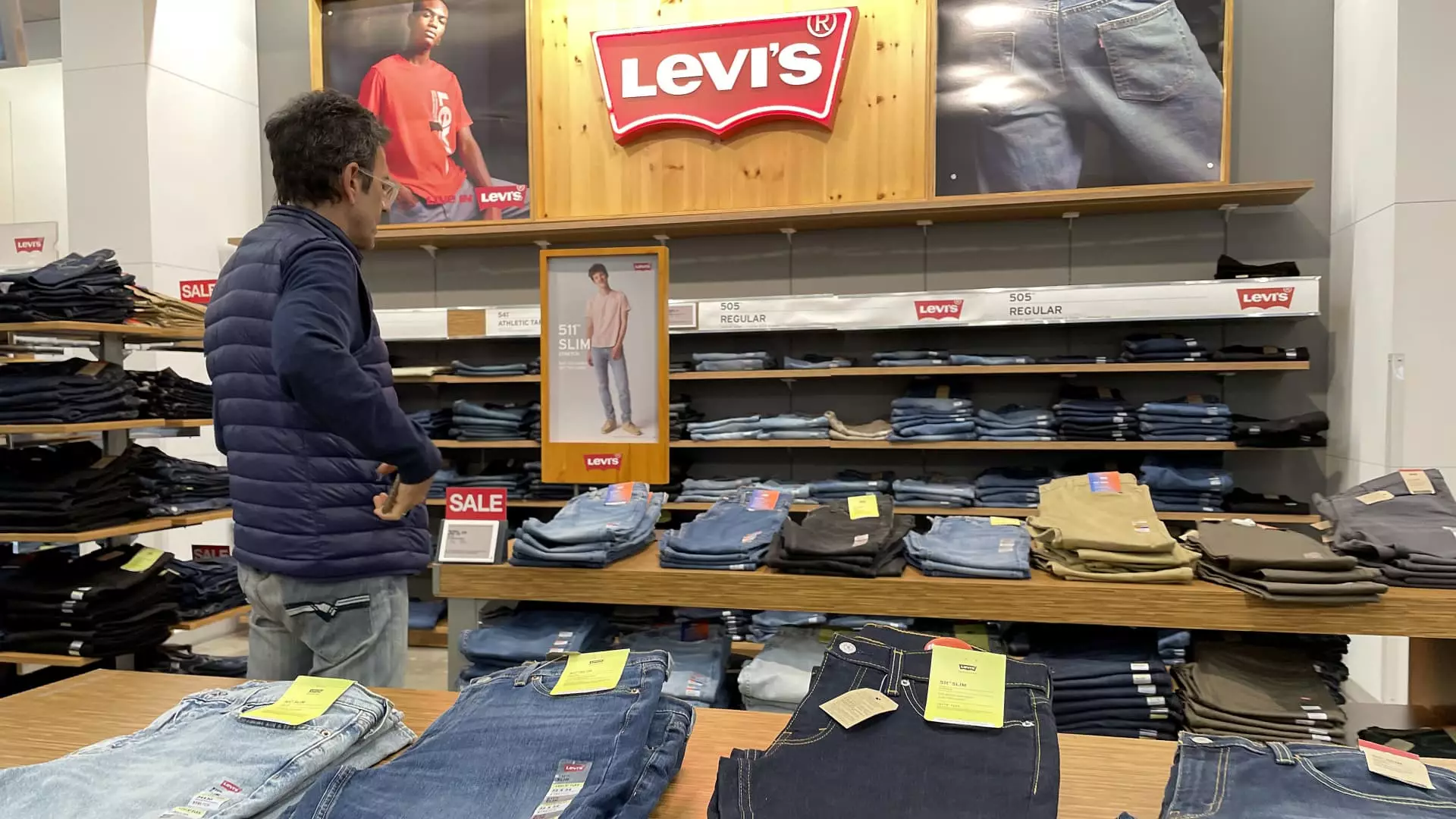Levi Strauss & Co, a name synonymous with denim culture, is experiencing a resurgence in its core business—Levi’s jeans. As consumers rediscover their love for denim, sales for the iconic brand have seen a notable rise. However, the company faces a significant challenge with its Dockers brand, which is dragging down its overall performance and prompting discussions about a potential divestiture.
In its recent financial report, Levi Strauss announced a 5% increase in sales attributable to the Levi’s brand, signifying the highest growth the company has seen in two years. Despite this positive development, overall revenue remained flat at $1.52 billion, falling short of analysts’ expectations. This lackluster performance led to an 8% dip in Levi’s stock in after-hours trading, reflecting investor concerns about the company’s broader financial health.
Earnings per share adjusted to 33 cents exceeded the predicted 31 cents, providing a glimmer of positive news. Still, the overall takeaways reveal a mixed story: while Levi’s brand thrived, the company was unable to replicate that success across its entire portfolio, particularly with Dockers.
Once a staple in American wardrobes, Dockers has struggled in recent years, particularly as fashion trends have shifted away from khakis. Sales for Dockers plummeted by 15% to $73.7 million over the reported quarter, signaling a brand in distress. Levi’s leadership acknowledges this struggle; they assert that separating Dockers could enhance profitability and stabilize growth. The Dockers brand has increasingly blurred the lines with Levi’s itself, as both brands move toward a lifestyle-oriented market.
Levi’s finance chief, Harmit Singh, emphasized that divesting Dockers could alleviate the overlap in branding and allow both segments to flourish independently. A strategic decision has been made to engage Bank of America in the potential sale of Dockers, marking a pivotal shift in the company’s operational focus.
A significant part of Levi’s renewed strategy has been leaning heavily into direct-to-consumer sales. This approach is not only generating higher profit margins but also providing valuable data insights about consumer preferences. The latest quarter saw direct channel sales increase by approximately 10%, with e-commerce surging by 16%. This pivot is crucial as Levi’s aims to increase the percentage of its revenue derived from direct sales from the current 44% closer to 55%.
The trend toward engaging directly with consumers is a response to evolving market dynamics and reflects a broader movement in retail. The company’s decision to enhance its own retail presence instead of relying on traditional wholesale partners has proven beneficial.
Integral to Levi’s revitalization strategy is a robust marketing campaign that taps into current cultural trends. A high-profile collaboration with global superstar Beyoncé serves not only as a marketing tactic but also as a reaffirmation of Levi’s investment in maintaining its cultural relevance. The partnership, which includes campaigns featuring Beyoncé in iconic Levi’s pieces, aims to leverage her influence to bolster brand visibility and appeal to a modern audience.
CEO Michelle Gass articulated the significance of connecting with cultural icons, noting that aligning with Beyoncé represents an essential marketing strategy for the brand. Through such collaborations, Levi’s seeks to resonate with younger consumers who value authenticity and cultural connection in their purchasing decisions.
While Levi’s has experienced growth in specific markets, there were notable shortfalls in others. Europe performed above expectations with reported sales of $406.6 million; however, the Americas and Asia underperformed. Issues such as a cybersecurity breach affecting a key wholesale partner in Mexico and broader macroeconomic challenges in China contributed to these declines.
Executives recognize the long-term potential in burgeoning markets like China despite recent setbacks, highlighting their commitment to adapt strategies that suit diverse regional landscapes. Leadership changes in China hint at an effort to rectify operational challenges and rejuvenate growth prospects in a critical market segment.
As Levi Strauss & Co navigates a complex landscape of growth and declining segments, its focus appears to shift firmly toward enhancing its core strengths. By divesting from underperforming brands like Dockers, prioritizing direct consumer relationships, and leveraging strategic partnerships, the company aims to solidify its footing in the competitive denim market. Through adaptability and innovation, Levi’s hopes to maintain its status as a cultural icon while pursuing growth in an ever-evolving retail environment.

